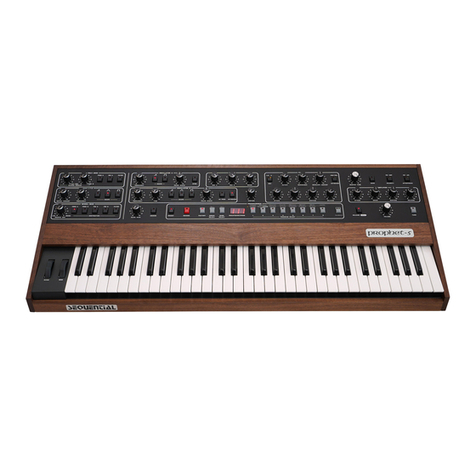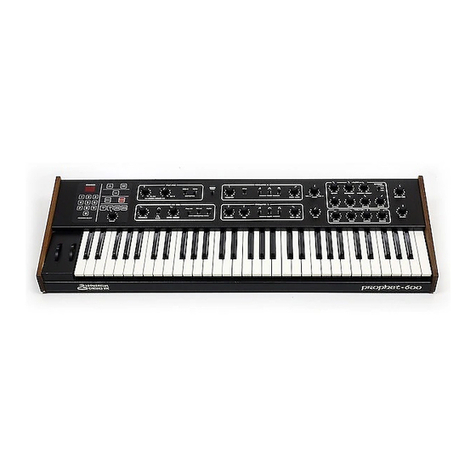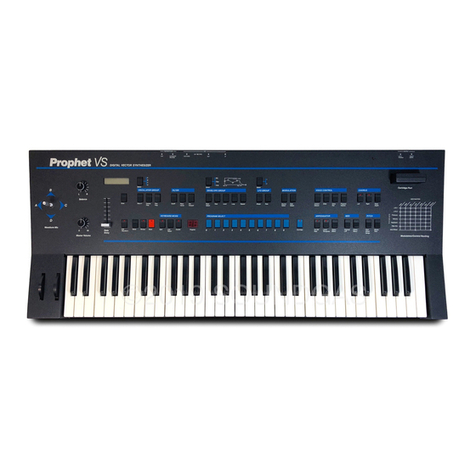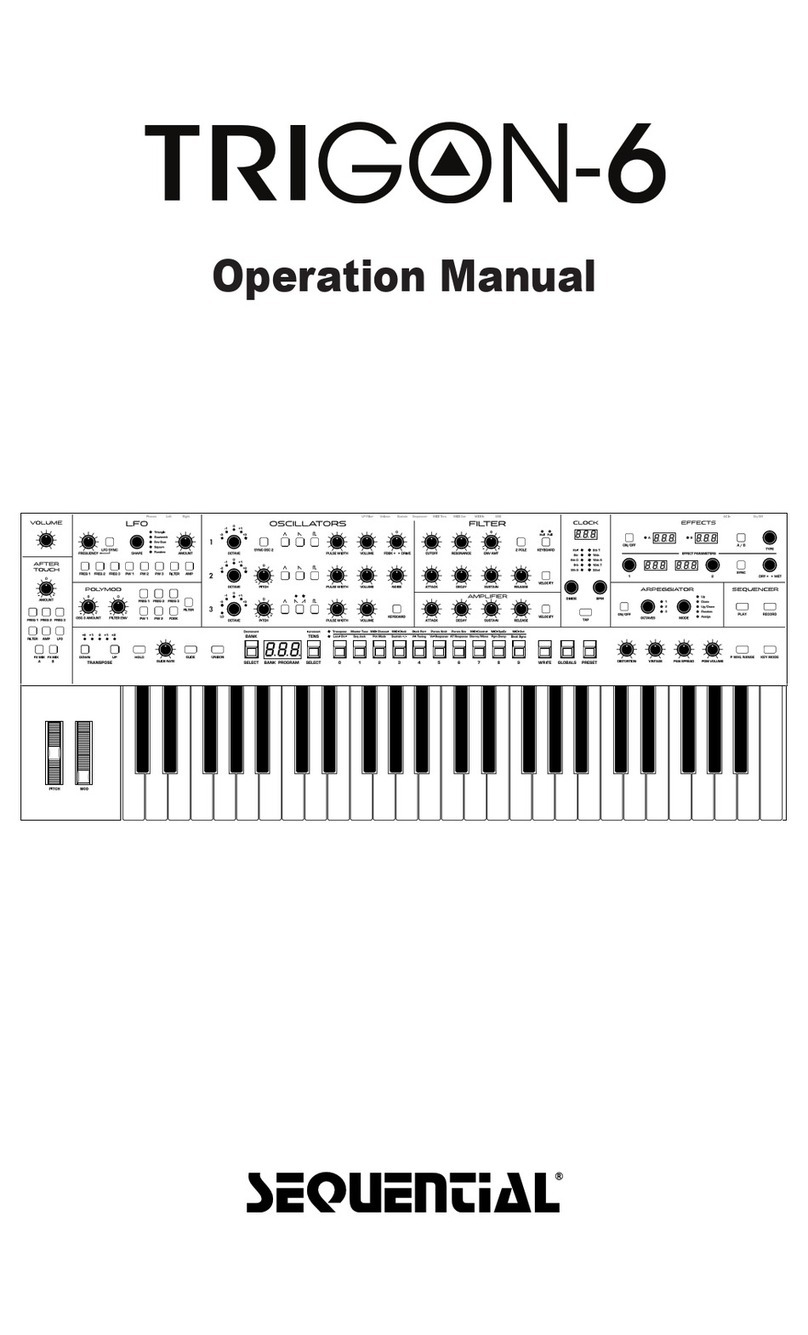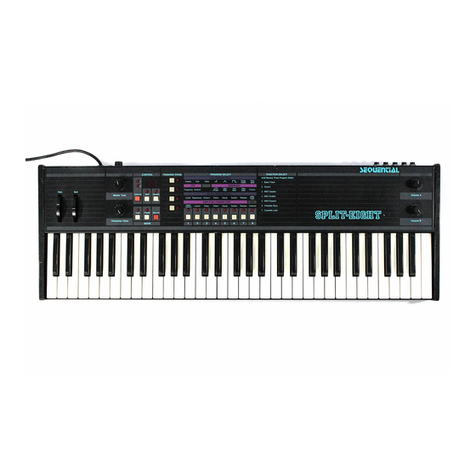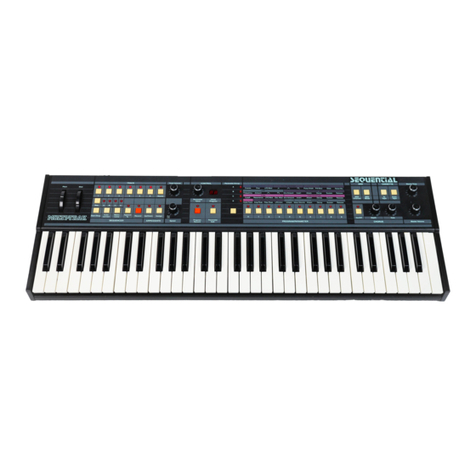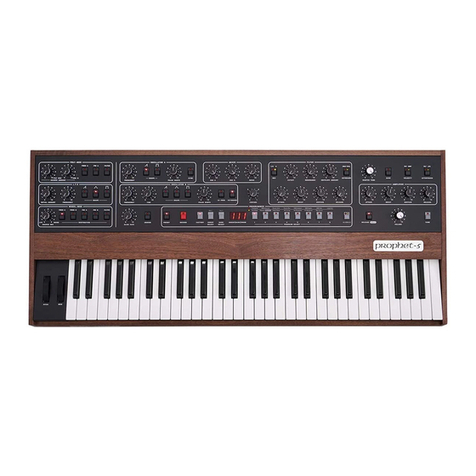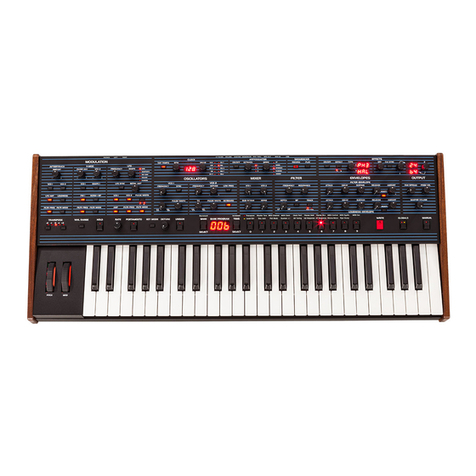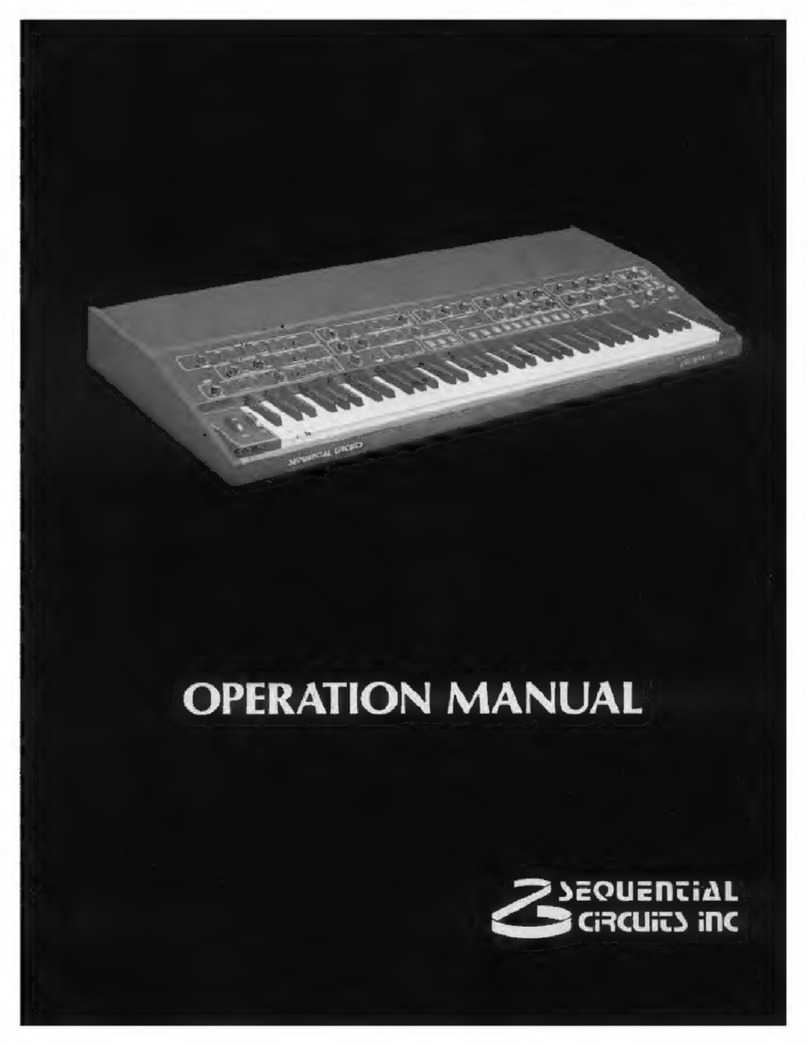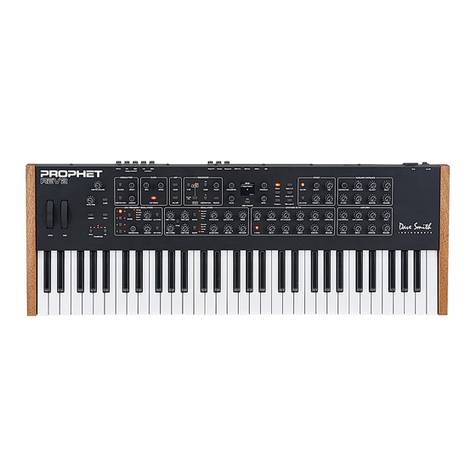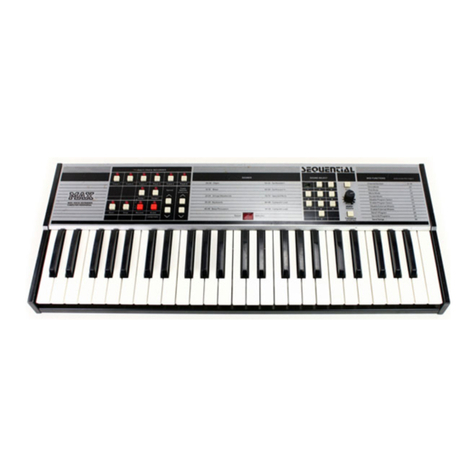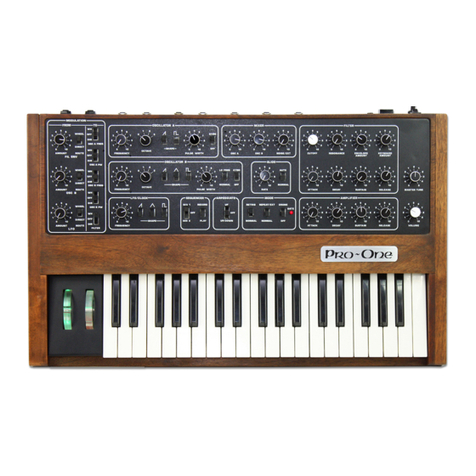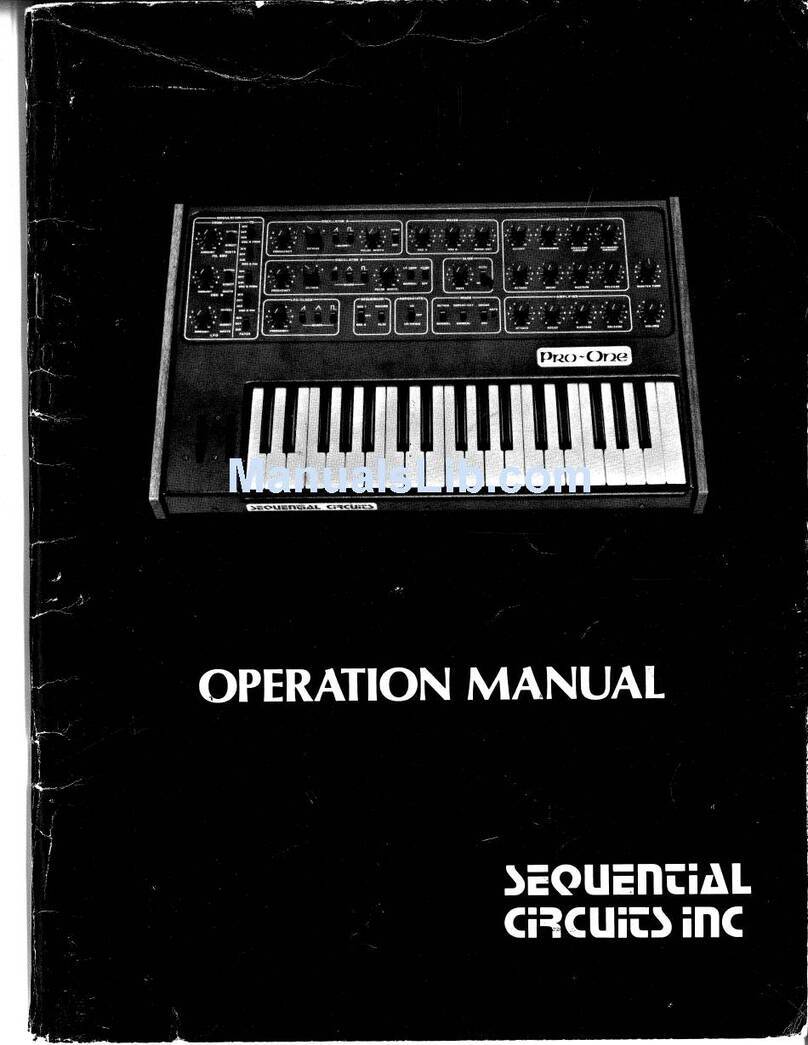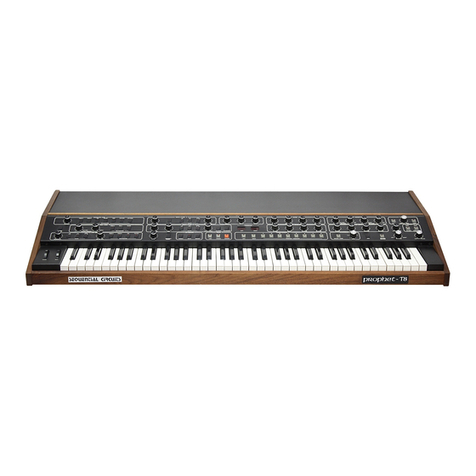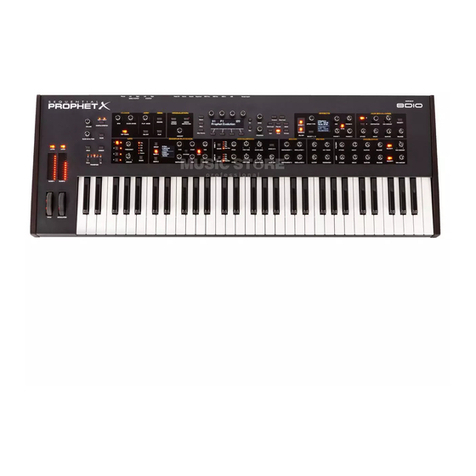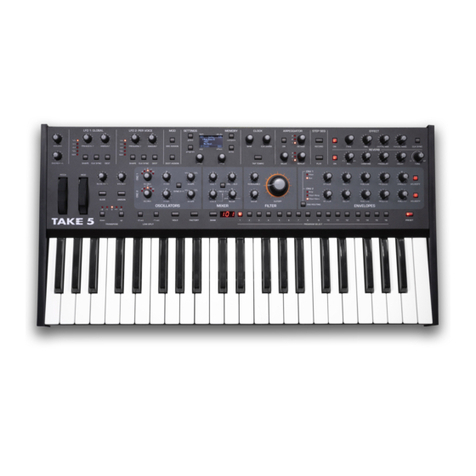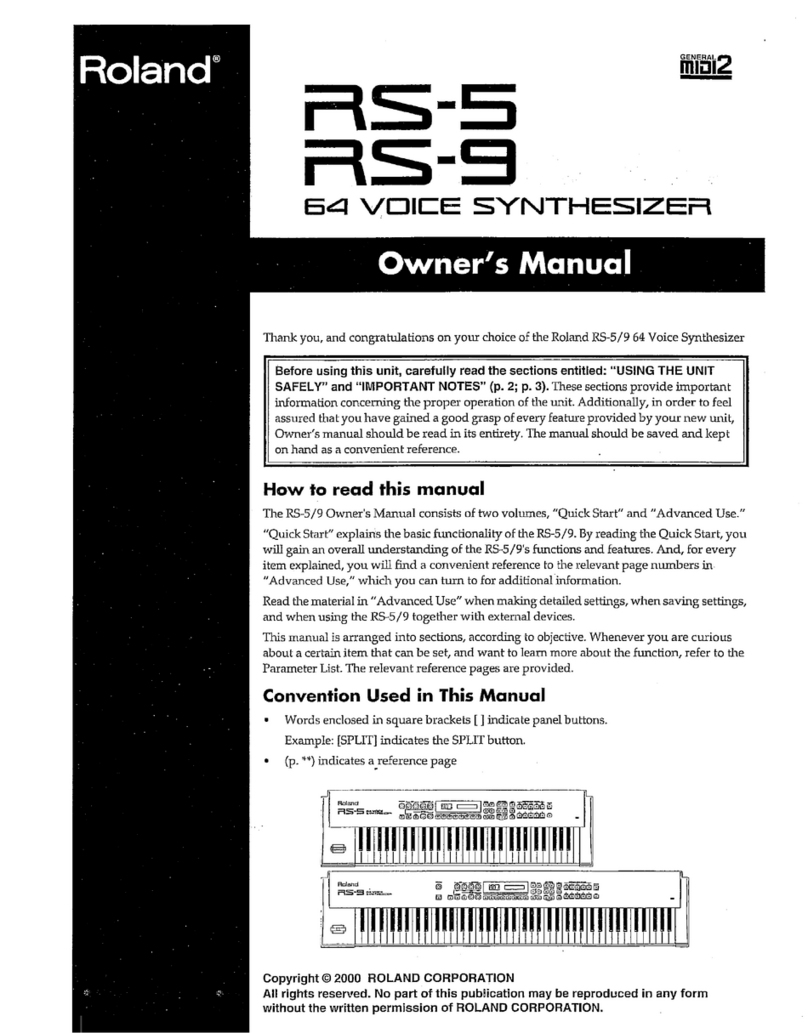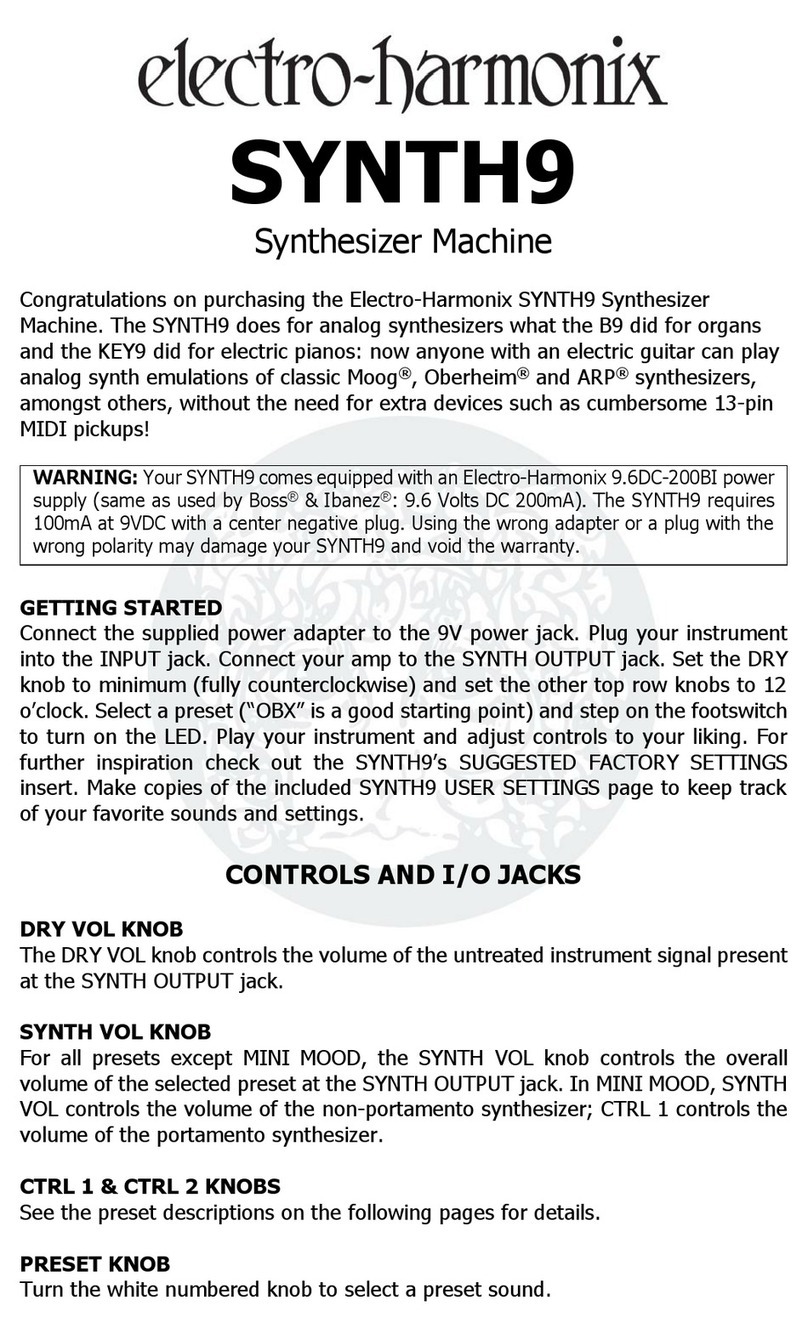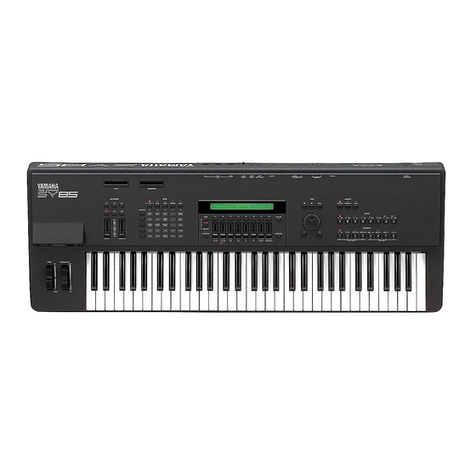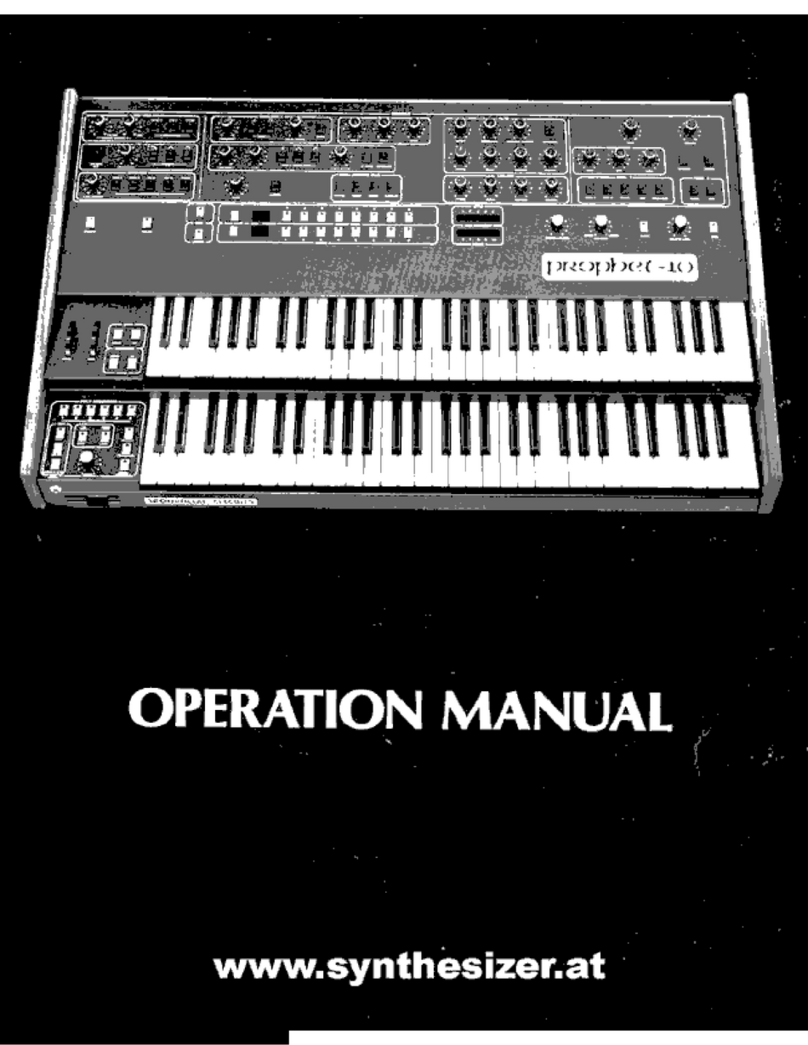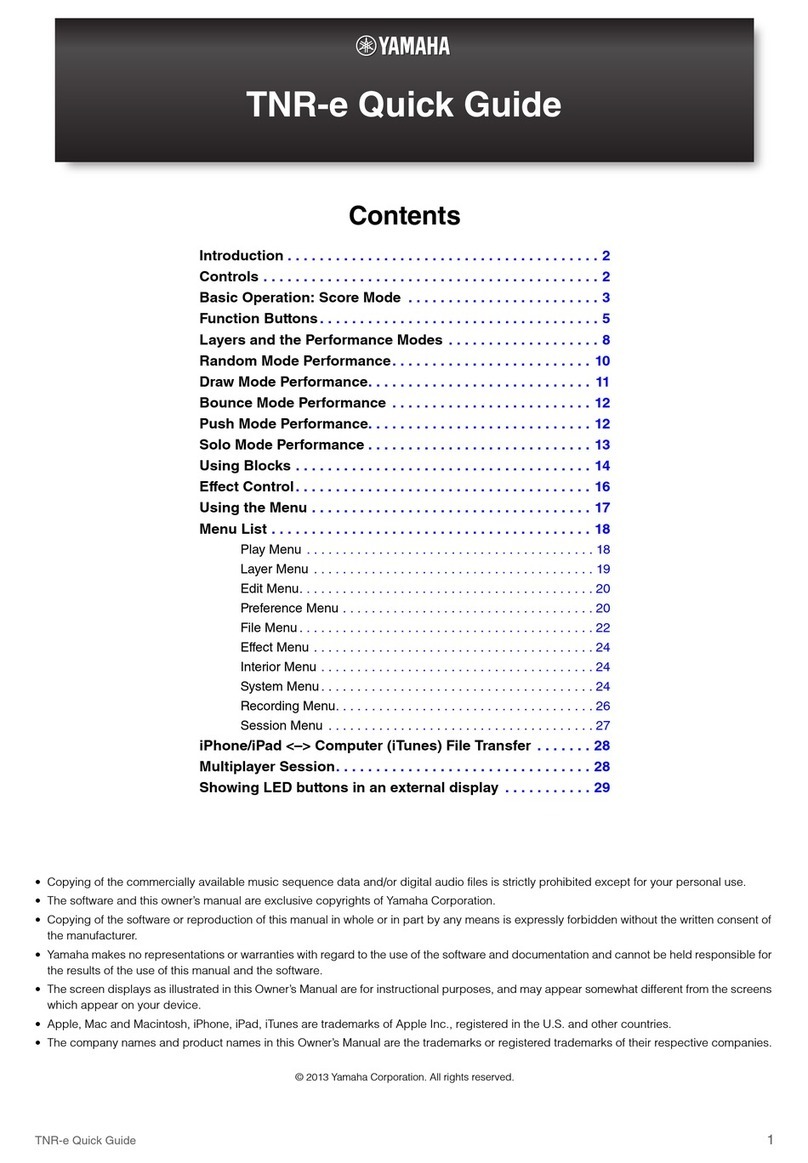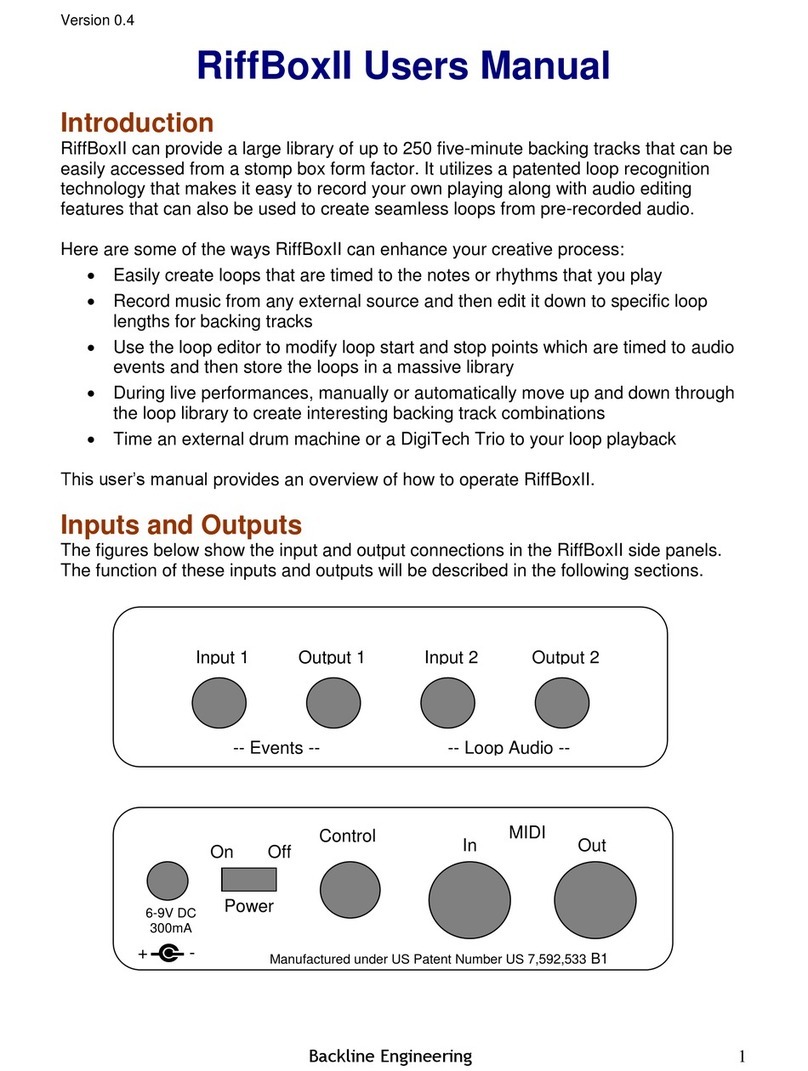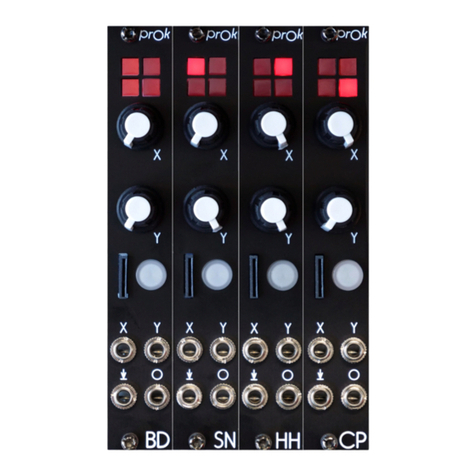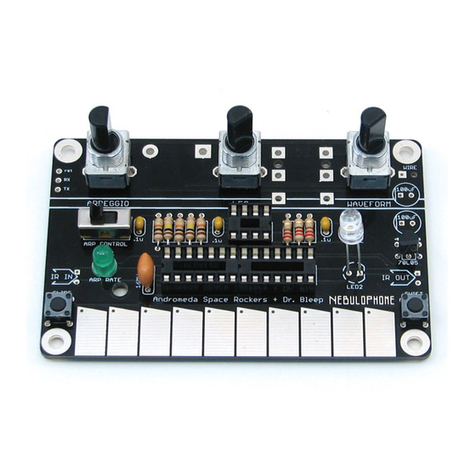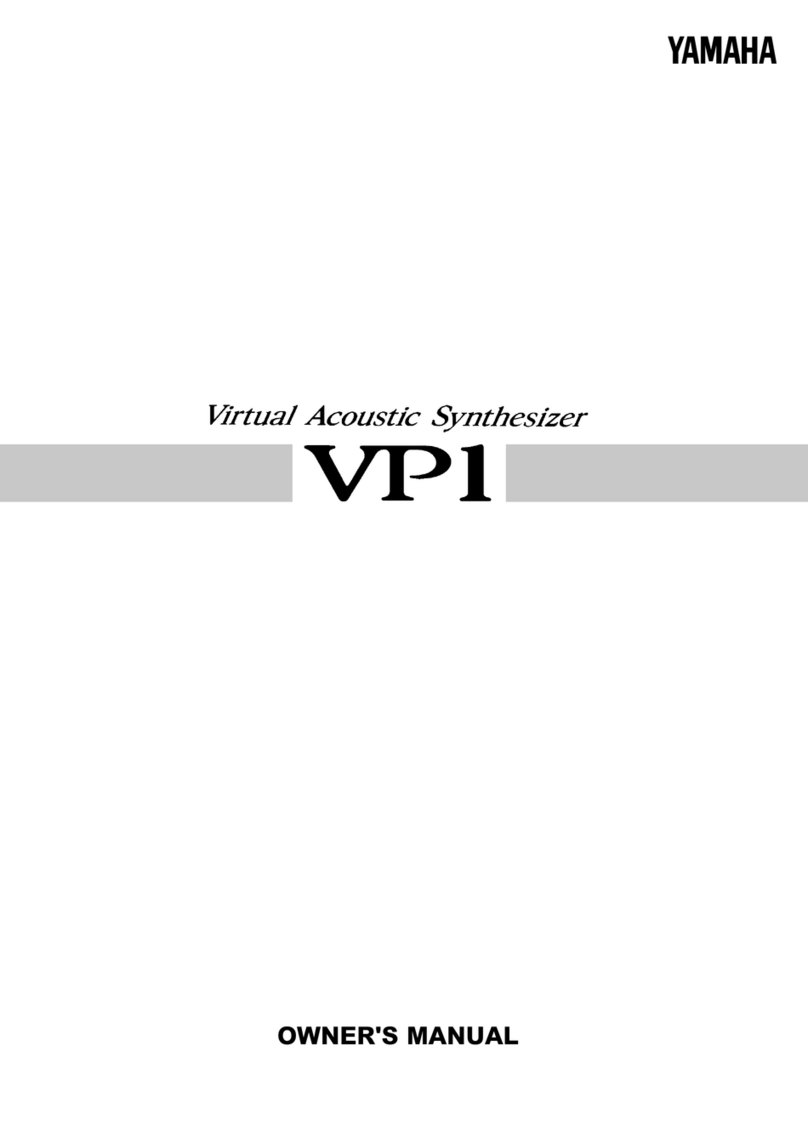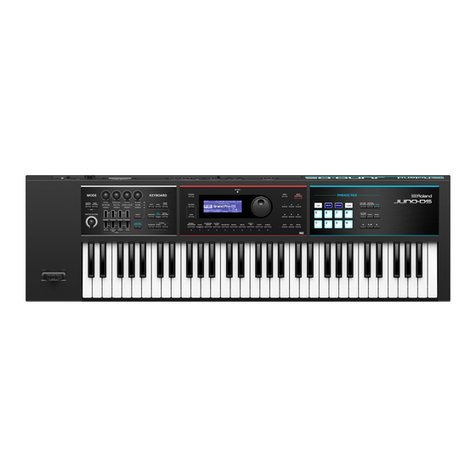
*i
In UNISON (monophonic) mode aUNISON CV derived from the lowest note played on the keyboard
becomes the main pitch control for all voices through the Common Analog circuitry. The five GATEs
occur simultaneously, but the envelope generators only re-trigger if no keys are held.
The microcomputer system itself consists of the microprocessor or CPU, memory (MEM), and
input/output (I/O) interface. The CPU executes the program permanently residing in the read-only
memory (EPROM). This program determines how the various input devices—keyboards, switches, and
knobs—are "read", and how "data" generated by them is "processed" to control the synthesizer. The
Scratchpad RAM is the CPU's work area. It holds data representing the current status of the keyboard
and all controls. Control status depends on the operational mode. In MANUAL mode the control data
corresponds to the current settings of the black, programmable knobs and switches. If desired this data
can be recorded from Scratchpad to the Non-Volatile Memory (NV RAM). Then, in PRESET mode,
selecting recorded programs moves them from NV to Scratchpad, reprogramming the synthesizer for
that sound. The EDIT feature allows one to alter individual control settings in Scratchpad, which can
then be recorded to supplement or replace the original program in NV RAM.
The remainder of this section discusses the Prophet's actual analog and microcomputer circuitry. Each
sub-circuit is described functionally in relation to its block diagram. Principal ICs and any uncommon
designs are explained. However the function of common linear, TTL, and MOS ICs is not covered
because anyone contemplating technical work on the Prophet must already be familiar with, for
example, combinational logic and op amp circuits.
2-3 ANALOG SYNTHESIZER DESCRIPTION
The definitions of the various CV and switch commands in the analog synthesizer must be clear before
the Voice and Common Analog sub-circuits can be discussed. Referring to Figure 2-4, the Common
Analog circuitry includes the master summers (MSUMs), Glide, and WHEEL-MOD circuits. The MSUMS
produce five Common Analog output CVs: ASUM, BSUM, PW ASUM, PW BSUM, and FILT SUM CV.
These enable simultaneous pitch control and modulation for the voices, as follows.
R104 MASTER TUNE (MTUN) and R1 PITCH wheel adjust OSC Aand Bfrequency directly—that is,
without computer processing—through ASUM CV and BSUM CV. To prevent interference with the
TUNE routine (see paragraph 2-13), the switches shown disconnect these controls during the TUNE
routine. In UNISON mode the KBD component of the FREQ CV appears through the UNISON CV. The
OSC BKBD ar>d FILT KBD switches are for keyboard tracking in UNISON mode. UNISON CV is
processed through the Glide circuit which, essentially, delays quick changes in UNISON CV as GLIDE
CV increases. The OSC BMSUM is similar to OSC A. FILT SUM CV mainly consists of the FILT CTF CV
(which follows the FILT CUTOFF KNOB). An external FILT CV IN can be added through the back panel.
The W-MOD signal, switchable to any MSUM consists of pink noise or LFO output as determined by the
W-MOD SOURCE MIX CV. CV inversion to the LFO VCA allows the NOISE and LFO levels to move in
opposite directions for asingle CV. The MOD wheel sets this mixture's output level to selected MSUMs.
Besides the Common Analog output CVs there are two types of computer-output CVs which terminate
at the voices. First, Patch CVs control all five voices identically. For example, all five Amplifier Envelope
Generator attack times will be equal for any patch, so the Amplifier Envelope Generator ATK CV is wired
to the same terminal on all five AMP ENV GENs. Other Patch CVs include MIX OSC A, P-MOD ENV
AMT, and FILT RESONANCE. Second, the Individual CVs determine the frequency of asingle VCO or
VCF alone. Each voice has two OSC S/H CVs and one FILT S/H CV. These signals contain the polyphonic
KBD component of the total FREQ CV applied to these devices. The ten OSC S/H CVs also contain INIT
FREQ control—actually common to the OSC As or Bs—and the TUNE "biases" which fine-tune
each VCO.
D.2 2-7
ip




















